This article was co-authored by Chris M. Matsko, MD and by wikiHow staff writer, Dan Hickey. Dr. Chris M. Matsko is a retired physician based in Pittsburgh, Pennsylvania. With over 25 years of medical research experience, Dr. Matsko was awarded the Pittsburgh Cornell University Leadership Award for Excellence. He holds a BS in Nutritional Science from Cornell University and an MD from the Temple University School of Medicine in 2007. Dr. Matsko earned a Research Writing Certification from the American Medical Writers Association (AMWA) in 2016 and a Medical Writing & Editing Certification from the University of Chicago in 2017.
There are 20 references cited in this article, which can be found at the bottom of the page.
wikiHow marks an article as reader-approved once it receives enough positive feedback. This article received 20 testimonials and 100% of readers who voted found it helpful, earning it our reader-approved status.
This article has been viewed 496,826 times.
It’s hard to imagine getting your skin pierced by a needle and not feeling anything, but it’s actually not such a wild idea when it comes to getting a shot. About 1 in 10 adults struggle with a fear of needles, and it makes sense—getting poked can be stressful![1] However, with a few relaxation and distraction techniques, it’s possible to get an injection with minimal to no pain and make your next trip to the doctor’s office a piece of cake. In this article, we’ll walk you through the best ways to receive a shot with little to no pain (professionally given or self-administered), as well as how to help anxious children navigate an injection. Go ahead and give these strategies a shot!
Things You Should Know
- Ask your doctor about using topical numbing creams. Distract yourself with small talk, look away from the needle, and hold your breath to reduce pain.
- Use OTC pain medicine, warm and cold compresses, and movement to reduce pain and swelling in the days after the injection.
- Help children by staying calm, distracting them with toys or videos, and rewarding them with a treat or a trip to the park afterwards.
- Administer shots to yourself in a large muscle or fatty area. Insert and remove the needle with a quick, fluid motion to reduce pain.
Steps
Minimizing Pain
-
1Talk to your provider about using numbing creams ahead of time. Explain how you’re apprehensive about the pain and ask about local anesthesia options—some clinics carry them, and there are plenty of over-the-counter numbing creams, sprays or patches that are safe to use on your own. Apply them 30-60 minutes before your appointment for the best results.[2]
- Confirm with your provider where the shot will be administered so you can numb up the correct spot.
- Always ask about using numbing creams ahead of time since not all offices or clinics carry them and you may have to supply your own.
-
2Distract yourself with calming activities in the waiting room. Let your thoughts drift from anxiety about the injection to happier, calmer feelings. Check your email, social media, listen to music, or even watch a movie on your phone while you’re waiting to get your mind off the shot. Some people even bring a friend along with them![3]
- Try squeezing a stress ball or playing with a fidget spinner to work out some of your nervous energy.
- Bring a book or magazine to read if that’s more interesting and distracting to you than social media or music.
- Remember that your doctor or nurse may not want you listening to your headphones during the actual appointment.
Advertisement -
3Stroke, rub, or massage the injection site before and after the shot. Ask your provider where the injection will be—most are given in the upper arm while most blood draws happen in your inner arm just below the elbow. Then, use your hands to gently rub and apply light pressure to the skin around the site for several minutes.[4]
- Massage the site while you’re in the waiting room, while you’re in the exam room, or even while you’re commuting to the doctor’s office.
- Do not rub or apply pressure to the injection site if the shot included medications like Lovenox or heparin since these can cause extra bruising.[5]
- This tactical stimulation prepares the skin for the added pressure of a needle and reduces the amount of pain you’re likely to feel.
-
4Distract yourself with conversation or something else in the exam room. Make small talk with the injection giver or with a friend or family member that’s accompanying you—the topic doesn’t matter as long as you’re diverting your attention to the conversation. If you’re more introverted, focus on an interesting poster on the wall or tune in to a catchy song playing in the background.[6]
- Ask your provider if it’s alright to scroll your phone during the shot if you think that’s the best way to keep yourself distracted.
- Try distracting yourself by imagining you’re on vacation or reciting poems and song lyrics to yourself (out loud or in your head).
- Pretend the needle is going into a different part of your body than the injection site so you’re not anticipating pain in the actual spot.
-
5Keep your muscles relaxed before and during the injection. While you’re sitting in the exam room, place your hand on your thigh, relax your shoulders, and just let your arm hang until it’s time for the shot.[7] Try breathing exercises to reduce pain and relax your mind and body, too.[8]
- Focus on deep, slow breaths to oxygenate your blood, slow your heart beat, and decrease muscle tension.
- Try this exercise: Inhale for 4 seconds, hold your breath for 4 seconds, and then exhale for 8 seconds.
-
6Look away from the needle. Close your eyes or turn your head away from the needle when it’s time for the shot. Wait until the provider tells you the needle is out before looking back at the injection site since you might not feel it move.[9]
- Studies show that your expectation and perception of pain is higher when you see the needle coming or in your skin.
-
7Hold your breath or cough during the injection. Take a deep breath a few seconds before the shot and hold it until the needle is out. The activity is distracting and increases your blood pressure, which can raise your threshold for pain tolerance. The reduction in pain is small, but every little bit helps![10]
- Alternatively, try coughing vigorously before and during the injection. It provides similar distraction and blood pressure-raising benefits.[11]
-
8Keep the body part that got the injection moving to relieve soreness. Continue doing your regular activities unless your doctor tells you to rest the injected muscles. If it’s an arm injection, try raising it up and moving it in circles to keep blood flowing around the injection site.[12]
- Movement helps the medicine circulate away from the injection spot more quickly, which relieves potential swelling or discomfort faster.
- Depending on the injection and location, you might be asked to avoid heavy lifting or vigorous activity for at least a few hours afterwards.
-
9Use hot and cold treatments after the shot to manage pain and swelling. Use a cold compress on the injection site for up to 1 day afterward to prevent or reduce possible swelling. If there’s any pain or soreness lingering, use a heating pad or warm washcloth to relax and soothe the area.[13]
- Apply hot or cold treatments for up to 15-20 minutes at a time, several times throughout the day.
- Do not apply ice or cold compresses directly to your bare skin.
-
10Use OTC anti-inflammatories to manage pain and swelling.[14] Try non-steroidal anti-inflammatory drugs (NSAIDs) like aspirin, ibuprofen (Advil, Motrin), or naproxen (Aleve), especially if the injection was intramuscular (delivered into a muscle). Also consider pain relievers like acetaminophen (Tylenol).[15]
- Ask your doctor if it’s safe to use these after an injection in case they interact with the injected medication.
- Always follow the dosage instructions for OTC medicines to avoid negative side effects.
Helping Children Get Shots
-
1Explain to your child why they need shots and what it will be like. Tell them about the health benefits of injections and immunizations—it’ll help protect them from getting sick and from spreading illnesses to others. Be honest and explain that shots can pinch or hurt for a second, but it won’t hurt for very long.[16]
- Act out the doctor’s visit with a stuffed animal ahead of time. Show them where the injection will go and bring the toy to the appointment for support.[17]
- Try not to fib and say the shot won’t hurt. It will build mistrust for future injections and make the experience more draining.
-
2Project a calm attitude before and during the visit. Do your best not to look tense or worried about how your child will react to the shot since young children can pick up on and feel those emotions, too. Treat the appointment like any other errand—just a quick item to check off your to-do list.[18]
- Try not to say “everything will be OK” to comfort them. This phrase usually pops up when there’s a problem, and your child might get worried.
- Try upbeat and encouraging phrases like “You’ll feel so grown up after your shot!” or “It’ll be over before you know it.”
-
3Ask about numbing creams or vibrational tools to block the pain. Before the appointment, ask what types of over-the-counter topical creams or sprays are safe for a child and apply them beforehand. Your provider might have them on site, but they can take up to 30 minutes to work and may not kick in before the injection time.[19]
- Try holding a vibration anesthesia device (VAD) just above where the shot will be given. The sensation will dull the pain of the injection.
- Make sure to confirm where the injection will be so you can numb up the correct spot.
-
4Have your child sit up for the injection instead of laying down. Ask your healthcare provider if the shot can be administered in a sitting position—a lot of times, kids are more fearful when they have to lie flat. If they’re struggling to sit still, hold them firmly but comfortably in your lap to calm them.[20]
- If your child is an infant, swaddle them tightly in a blanket with one leg exposed for the shot.
- Don’t hold your child down against their will since this can be a traumatizing experience. Use comforting touch or distractions to calm them instead.
-
5Use toys, videos, or songs to take their attention off the shot. Before the appointment, ask them what they’d like to do to distract themselves so they aren’t focused on pain or anxiety. Bring a few options in case they change their mind—try a favorite stuffed animal, a tablet that plays music or videos, or reading aloud from their favorite book.[21]
- For infants and very young children, try giving them a pacifier or making funny, distracting faces when it’s time for the shot.
-
6Give your child plenty of praise and a small reward afterward. Let them know how proud you are of them for being brave and grownup during and after the injection so they feel like they’ve accomplished something. Plan a small reward, too—even if the shot didn’t hurt them too much, they might still be worked up after the appointment.[22]
- Bring a treat like a juice box or a snack that they can have after the shot, or go on a fun outing to the park or a toy store on your way home.
Self-Administering Shots
-
1Rotate where you administer intramuscular shots. Intramuscular shots tend to cause more bruising or swelling, so avoid sticking the exact same spot if you can. Consult your healthcare provider about the best place to inject. If there’s a specific muscle you’re supposed to target each time, follow those instructions. Easy intramuscular locations include:[23]
- The middle of the thigh
- The hip
- The upper arm (deltoid)
- The upper outer part of the buttocks
-
2Inject subcutaneous shots in fatty areas. Look for a spot where you can grab or pinch a handful of skin and fat. Double check with your provider where the best locations are, and follow their instructions if they tell you to inject a specific spot. Generally, the more fat in the area, the less painful the shot will be.[24] Try:
- A roll of fat around your waist
- The buttocks
- The upper arm (use the top of a chair, a door, or the outside corner of 2 walls to help push fat from the back of your arm forward)
-
3Inject lean areas at a 45 degree angle or fatty areas at a 90 degree angle. If you can’t find a large fatty area to hold, inject at 45 degrees (preferably with a shorter needle like a 5/16 in (7.9 mm) one). If you’ve got a good handful of skin and fat, inject at any angle between 45 and 90 degrees.[25]
- If you’re administering a shot to someone else, sit down so you’re at their level and can gauge the angle of the injection accurately.
-
4Insert the needle quickly. Begin the stroke about 4 in (10 cm) from the skin and pretend you’re throwing a dart. Move your entire forearm and then flick your wrist at the very end to push the entire length of the needle under the skin. The more fluid the motion, the less pain you’ll feel.[26]
- Resist the urge to rest the needle on your skin and then push. This is a much slower motion that will hurt noticeably more.
-
5Inject slowly and continuously, then pull the needle straight out. Once the needle is in, stop pinching your skin. Use your thumb (whichever is more comfortable) to slowly push the needle plunger down until all of the medication is injected. Push in one fluid motion so there’s no start-and-stop to the flow of medicine.[27]
- When the syringe is empty, pull it straight out of your skin at the same angle you inserted it.
-
6Remind yourself of the benefits of your self-administered injections. Focus on the good that the medicine is doing for you and how it improves your quality of life. Remember the convenience factor, too—going to the doctor for shots can take hours sometimes, but self-administered shots can be done from the comfort of your home or even on the go if needed.[28]
- When you think about the end-goal of keeping yourself healthy, it makes the pain seem less severe and more manageable (or at least, more worth it).
Expert Q&A
Did you know you can get expert answers for this article?
Unlock expert answers by supporting wikiHow
-
QuestionI'm getting a shot in my arm tomorrow and I'm nervous. What do I do to be ready?
 Chris M. Matsko, MDDr. Chris M. Matsko is a retired physician based in Pittsburgh, Pennsylvania. With over 25 years of medical research experience, Dr. Matsko was awarded the Pittsburgh Cornell University Leadership Award for Excellence. He holds a BS in Nutritional Science from Cornell University and an MD from the Temple University School of Medicine in 2007. Dr. Matsko earned a Research Writing Certification from the American Medical Writers Association (AMWA) in 2016 and a Medical Writing & Editing Certification from the University of Chicago in 2017.
Chris M. Matsko, MDDr. Chris M. Matsko is a retired physician based in Pittsburgh, Pennsylvania. With over 25 years of medical research experience, Dr. Matsko was awarded the Pittsburgh Cornell University Leadership Award for Excellence. He holds a BS in Nutritional Science from Cornell University and an MD from the Temple University School of Medicine in 2007. Dr. Matsko earned a Research Writing Certification from the American Medical Writers Association (AMWA) in 2016 and a Medical Writing & Editing Certification from the University of Chicago in 2017.
Family Medicine Physician
-
QuestionHow can I stop myself from jumping when I get an injection in my butt?
 Chris M. Matsko, MDDr. Chris M. Matsko is a retired physician based in Pittsburgh, Pennsylvania. With over 25 years of medical research experience, Dr. Matsko was awarded the Pittsburgh Cornell University Leadership Award for Excellence. He holds a BS in Nutritional Science from Cornell University and an MD from the Temple University School of Medicine in 2007. Dr. Matsko earned a Research Writing Certification from the American Medical Writers Association (AMWA) in 2016 and a Medical Writing & Editing Certification from the University of Chicago in 2017.
Chris M. Matsko, MDDr. Chris M. Matsko is a retired physician based in Pittsburgh, Pennsylvania. With over 25 years of medical research experience, Dr. Matsko was awarded the Pittsburgh Cornell University Leadership Award for Excellence. He holds a BS in Nutritional Science from Cornell University and an MD from the Temple University School of Medicine in 2007. Dr. Matsko earned a Research Writing Certification from the American Medical Writers Association (AMWA) in 2016 and a Medical Writing & Editing Certification from the University of Chicago in 2017.
Family Medicine Physician
Warnings
- If you have a history of feeling faint or dizzy after injections, make sure you’re sitting or laying down when you receive your shot and bring a beverage or snack to have afterwards. Rest for 15 minutes after the shot or until you feel stronger.[29]⧼thumbs_response⧽
- Contact your doctor if your injection site hurts for more than 48 hours or you experience fever, chills, or dizziness. It’s possible these are symptoms of a reaction that needs medical attention.[30]⧼thumbs_response⧽
References
- ↑ https://my.clevelandclinic.org/health/diseases/22731-trypanophobia-fear-of-needles
- ↑ https://www.albertahealthservices.ca/assets/info/ppih/if-ppih-covid-19-commitment-comfort-vaccine-numming-cream.pdf
- ↑ https://copebetter.com/7-ways-to-overcome-anxiety-at-the-doctors-office/
- ↑ https://www.cdc.gov/vaccines/pubs/pinkbook/vac-admin.html
- ↑ https://www.mskcc.org/cancer-care/patient-education/how-give-yourself-subcutaneous-injection-using-prefilled-syringe
- ↑ https://www.helpguide.org/articles/anxiety/overcoming-a-fear-of-needles.htm
- ↑ https://mydoctor.kaiserpermanente.org/mas/news/covid-19-vaccine-arm-soreness-tips-1844945
- ↑ https://www.helpguide.org/articles/anxiety/overcoming-a-fear-of-needles.htm
- ↑ https://www.sciencedaily.com/releases/2012/05/120514104738.htm
- ↑ https://www.nicswell.co.uk/health-news/does-holding-your-breath-during-an-injection-make-it-less-painful
- ↑ https://www.ncbi.nlm.nih.gov/pmc/articles/PMC344294/
- ↑ https://mydoctor.kaiserpermanente.org/mas/news/covid-19-vaccine-arm-soreness-tips-1844945
- ↑ https://mydoctor.kaiserpermanente.org/mas/news/covid-19-vaccine-arm-soreness-tips-1844945
- ↑ https://mydoctor.kaiserpermanente.org/mas/news/covid-19-vaccine-arm-soreness-tips-1844945
- ↑ https://medlineplus.gov/ency/article/002123.htm#:~:text=Acetaminophen%20(Tylenol)%20is%20known%20as,It%20does%20not%20relieve%20inflammation.
- ↑ https://www.childrenscolorado.org/conditions-and-advice/parenting/parenting-articles/fear-of-shots/
- ↑ https://shotofprevention.com/2016/05/04/the-12-best-pediatrician-tips-to-help-kids-who-are-afraid-of-shots/
- ↑ https://shotofprevention.com/2016/05/04/the-12-best-pediatrician-tips-to-help-kids-who-are-afraid-of-shots/
- ↑ https://www.healthychildren.org/English/safety-prevention/immunizations/Pages/Managing-Your-Childs-Pain-While-Getting-a-Shot.aspx
- ↑ https://www.childrenscolorado.org/conditions-and-advice/parenting/parenting-articles/fear-of-shots/
- ↑ https://www.healthychildren.org/English/safety-prevention/immunizations/Pages/Managing-Your-Childs-Pain-While-Getting-a-Shot.aspx
- ↑ https://shotofprevention.com/2016/05/04/the-12-best-pediatrician-tips-to-help-kids-who-are-afraid-of-shots/
- ↑ https://medlineplus.gov/ency/patientinstructions/000935.htm
- ↑ https://www.diabetesincontrol.com/how-to-give-a-painless-injection/
- ↑ https://www.diabetesincontrol.com/how-to-give-a-painless-injection/
- ↑ https://www.diabetesincontrol.com/how-to-give-a-painless-injection/
- ↑ https://www.mskcc.org/cancer-care/patient-education/how-give-yourself-subcutaneous-injection-using-prefilled-syringe
- ↑ https://www.cedars-sinai.org/blog/techniques-to-overcome-fear-of-needles.html
- ↑ https://www.cdc.gov/vaccinesafety/concerns/fainting.html
- ↑ https://www.seattlechildrens.org/conditions/a-z/immunization-reactions/
About This Article
To get an injection without it hurting, apply pressure to the injection site beforehand, which will make the prick of the needle less shocking. You can also numb your skin by holding an ice cube on it for a few minutes before you get the injection. If you're worried it's still going to hurt, ask the doctor or nurse to apply a numbing cream to the injection site. Also, try not to tighten your muscles during the injection since that can make it hurt more. For tips on caring for an injection site afterward so it doesn't hurt, scroll down!
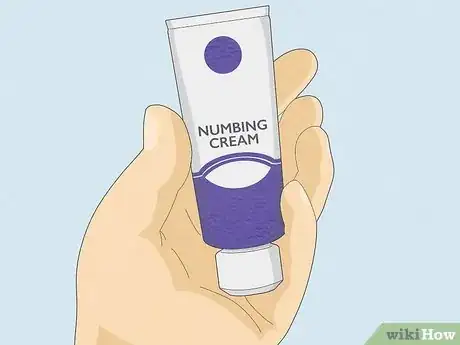
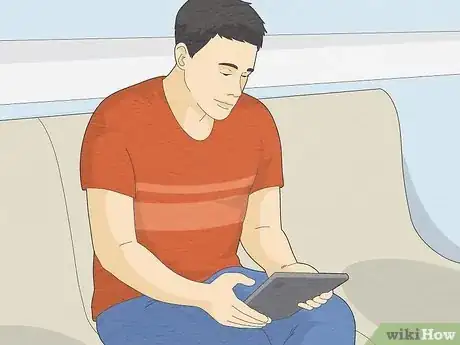
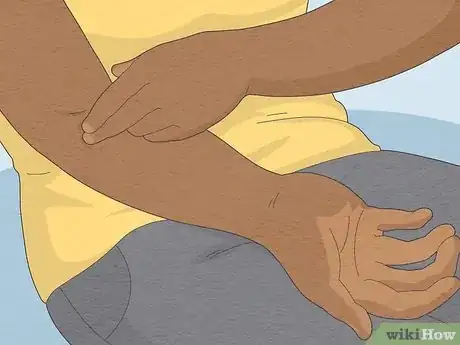
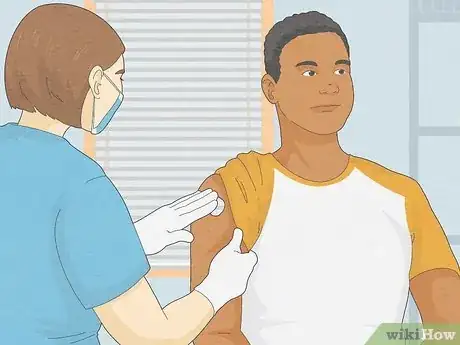
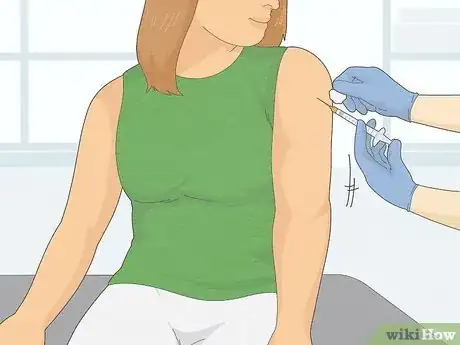
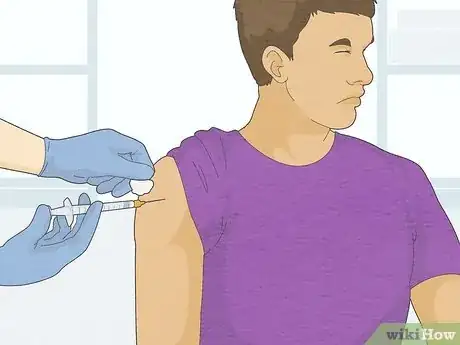
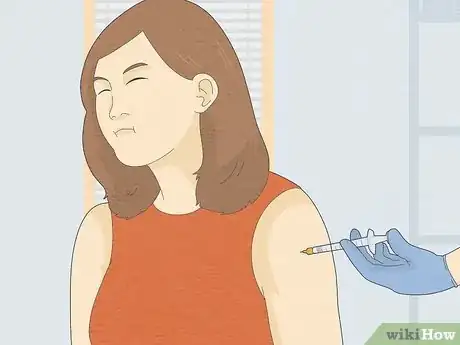
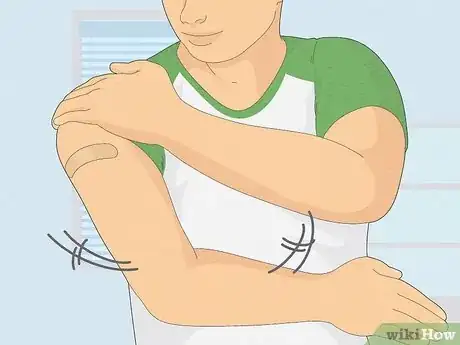
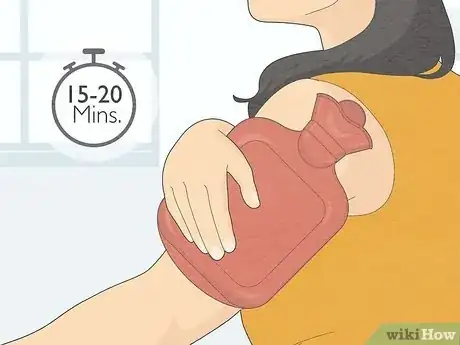
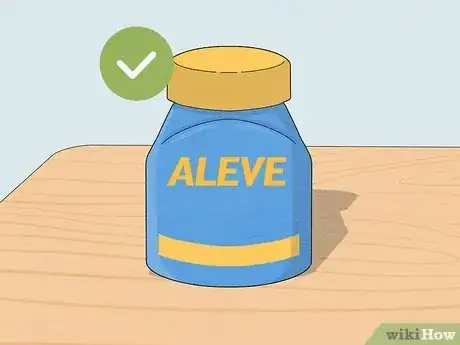
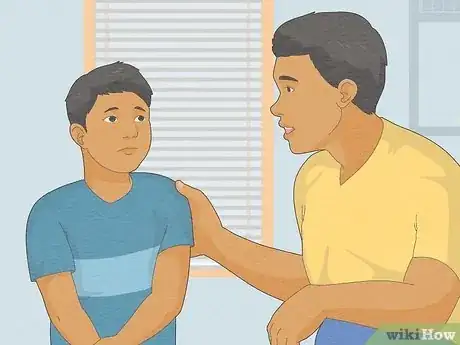

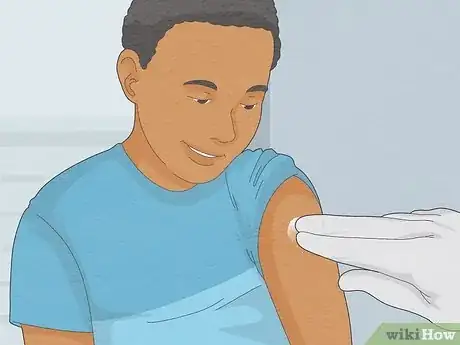
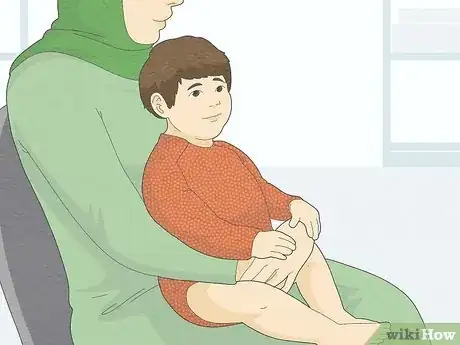
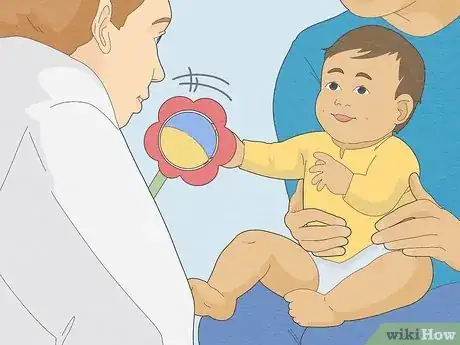

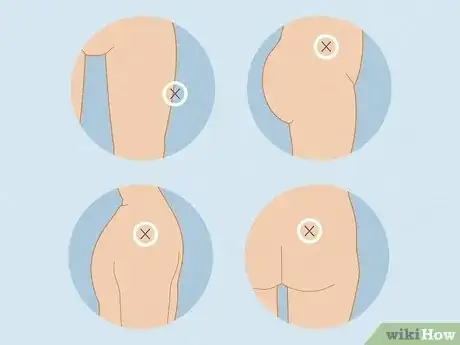
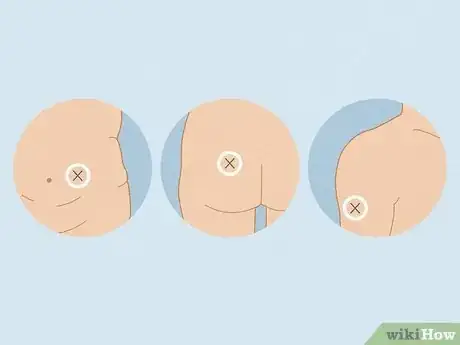
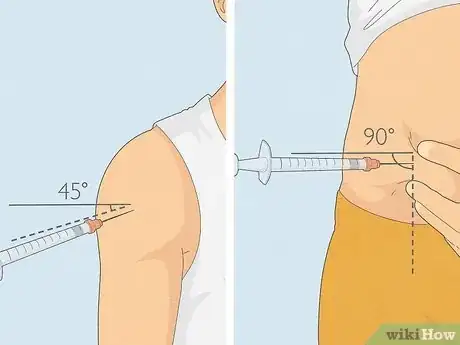
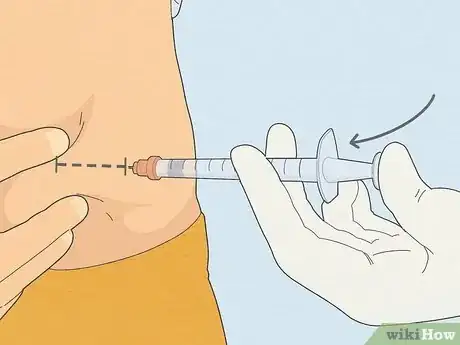
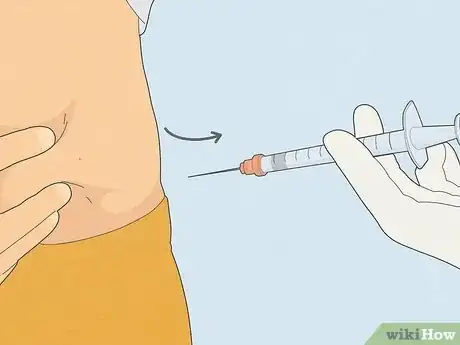
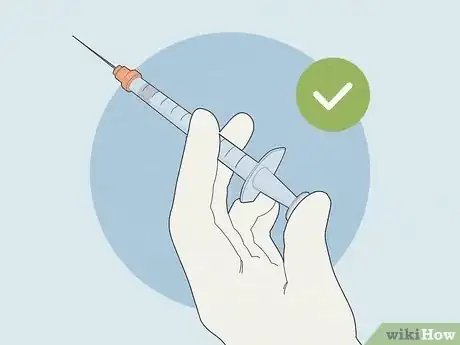
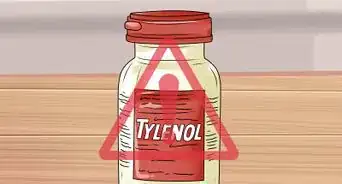
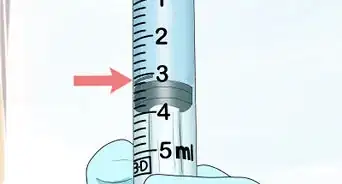

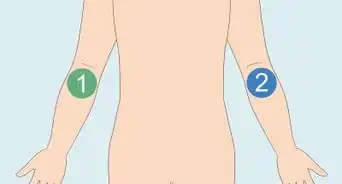

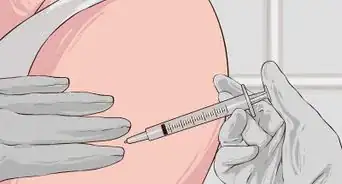

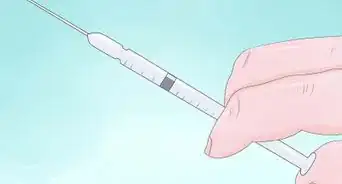
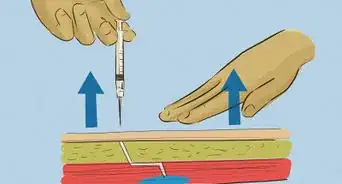
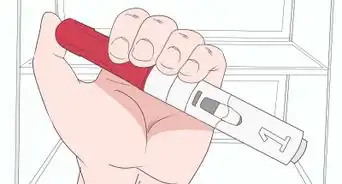
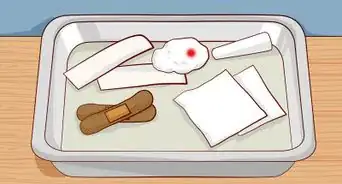
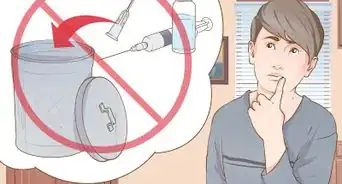
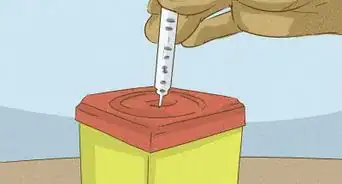
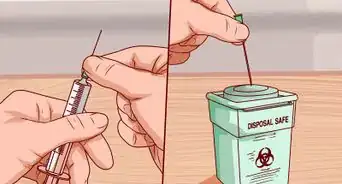










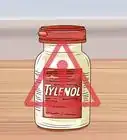
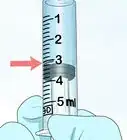

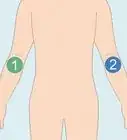




































Medical Disclaimer
The content of this article is not intended to be a substitute for professional medical advice, examination, diagnosis, or treatment. You should always contact your doctor or other qualified healthcare professional before starting, changing, or stopping any kind of health treatment.
Read More...